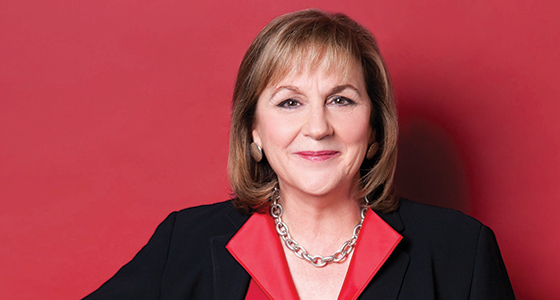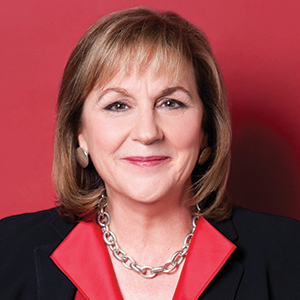In December 2019, Diane Holder expected a very robust year for UPMC Health Plan. The president and CEO expected continued year-over-year growth in market share, adding to the 15,000 employers it serves and bolstering its Medicare Advantage, Medicaid and commercial insurance market shares.
“We had every expectation that we would continue to grow, which we did, and that we would continue to operate with maybe 25 percent of our employees remote, 75 percent here or at some office location,” she says.
If January and February were the only indications of how the year would go, Holder’s sense of the insurer’s 2020 would have been correct. But then March happened, and UPMC Health Plan saw a dramatic change in patterns of care. Essentially overnight, government guidance changed, dictating that people should not seek elective surgeries. That created anxiety among clients around seeking in-person services.
Simultaneously, UPMC Health Plan, in about 10 days, shifted its approximately 6,000 Pennsylvania employees to remote work. But those weren’t the only changes it would have to make. It had to adjust its products to align with the new government regulations. It had to find ways to ensure its clients could continue to get needed care or support in a COVID-19 environment, that there were no interruptions in their medications if they couldn’t go to a pharmacy.
The insurer also needed to find ways to offer flexibility to its client companies and to facilitate doctors’ and hospitals’ ability to do telehealth. And it had to do that all while managing its standard, everyday workload.
In short, there was a lot to do. But as Holder says, “Nothing like a good crisis to get people moving, right?”
There’s a plan for that
UPMC Health Plan was dealing multiple issues, but essentially two core problems, at the same time: Ensuring employees were safe and able to do their jobs at home, and making the necessary product changes to comply with new government regulations and adjust to new market realities. To address its internal needs, the first place the insurer turned was its business continuity and business disruption plans.
“We had pretty much a fully baked manual that said, if I’ve got to relocate people, what equipment do they need? What’s the communication channel that has to be followed? Who’s running the business continuity meetings? And so we, within hours, were able to put together our business continuity team that oversees preparation for emergencies,” Holder says.
While some companies could be guilty of assembling a continuity and disruption plan and then sticking it in a drawer, never to be seen again, UPMC Health Plan can’t allow itself to take that approach. Holder says the plan is routinely reviewed.
“We have to be able to do that because we’re a highly regulated entity,” Holder says. “We’re much like a bank. We have to be really Johnny-on-the-spot, with no downtime. Our capacity to keep reviewing that was very important. So I felt pretty comfortable about that.”
Being comfortable with their plan meant UPMC Health Plan didn’t lose any time worrying whether it had the right combination of people with the right technical and administrative skills to come together rapidly and ensure the organization could continue to operate during a crisis. Its emergency preparedness team, which includes its COO, CTO and chief communications officer, deployed the plan and conducted a rapid assessment of which employees had equipment that could support them at home, whether people had the right bandwidth, etc.
Communication with regulators, customers and employees was critical. Holder says UPMC Health Plan essentially put in command centers from which communication could flow 24/7 from key members of the organization. There were multiple daily touch points with daily early morning sessions and routine messaging to all 6,000 employees from a variety of levels and sources with status updates.
From this, Holder learned how important leadership is in challenging times. People wanted to hear from those in charge, which justified the need for daily communication, sometimes multiple times a day.
“You have to be comfortable as a leader not only being visible, which I think we all think a leader should be, but really visible,” she says. “And it really came home to me that you have to be very good at multitasking. There was no such thing as, ‘I’ll worry about this today and I’ll get to that problem tomorrow.’ There were a lot of things that had to happen very quickly.”
It also reinforced the importance of the investment an organization makes in its people. Their resilience and ability to problem solve helps a company when it’s most vulnerable.
Making connections
Companies are making a lot of pandemic-related adjustments to their businesses, and some of those changes may last. At UPMC Health Plan, Holder says there have been a lot of positives from the greater use of telehealth. It’s increased access, which Holder says has helped clients not feel abandoned or as if they need to take a risk to see a health care provider.
The insurer also learned how valuable communication has been to its Medicare members. One way UPMC Health Plan has been facilitating that communication is through virtual town halls, featuring people offering advice on coping with stress at a time when going out or seeing others is limited. The insurer also developed an app with information and resources to help people cope with mild anxiety and depression.
“It required us to recognize that people felt vulnerable and try to figure out how to keep connecting with them,” Holder says. “There were a lot of what sound like relatively small things, but in the daily course of living, they were the basics that made people most nervous.”
To understand what messages were important and to whom, UPMC Health Plan relied on analytic models to identify certain populations within its group of insured. For instance, it looked for people who have health conditions that might make them feel more vulnerable to COVID-19. With those clients identified, the insurer undertook an aggressive outreach campaign.
“And we got a lot of feedback from people that that was comforting and helpful,” she says.
Work/life imbalance
While UPMC Health Plan was making the necessary short-term changes to address the market during the COVID-19 pandemic, none of its regular work could stop. It still had to file Medicare bids, work to expand its network, pay claims and prepare for 2021. To understand how its employees were managing the load, the company had ground-up conversations, listening to people on the front line to learn what has or hasn’t worked for them.
Employees are coping with significant changes in their work environment while also navigating dramatic changes in their personal and family lives. Holder says there’s a recognition that their work life affects their home life and vice versa.
“How do we help people to manage all of that?” Holder says. “You have to listen to people. You have to ask them what it is that makes them most productive.”
To that end, the company recently finished a survey of virtually every employee, getting a 96 percent response rate with feedback related to issues such as challenges at work, if they feel the company supports them and what they think it could do better.
“What we were trying to assess is whether people felt they were being listened to,” she says. “And if they were being listened to, were they getting the responses and were they able to stay engaged in the work?”
Holder says she was worried that people might feel disconnected from the work and that that might affect their ability to handle it all.
“I was really pleased that the survey response was very positive,” Holder says. “But it’s something we can build on to go back and say, ‘OK, well maybe this part wasn’t as good as the rest of it. How do we make that better?’ I think you have to listen to the people doing the work and ask them what will make them the most effective.”
TAKEAWAYS
- There’s no such thing as overcommunicating during a crisis.
- Don’t leave business continuity plans in a drawer.
- Keep an eye on employee needs as they adjust.


